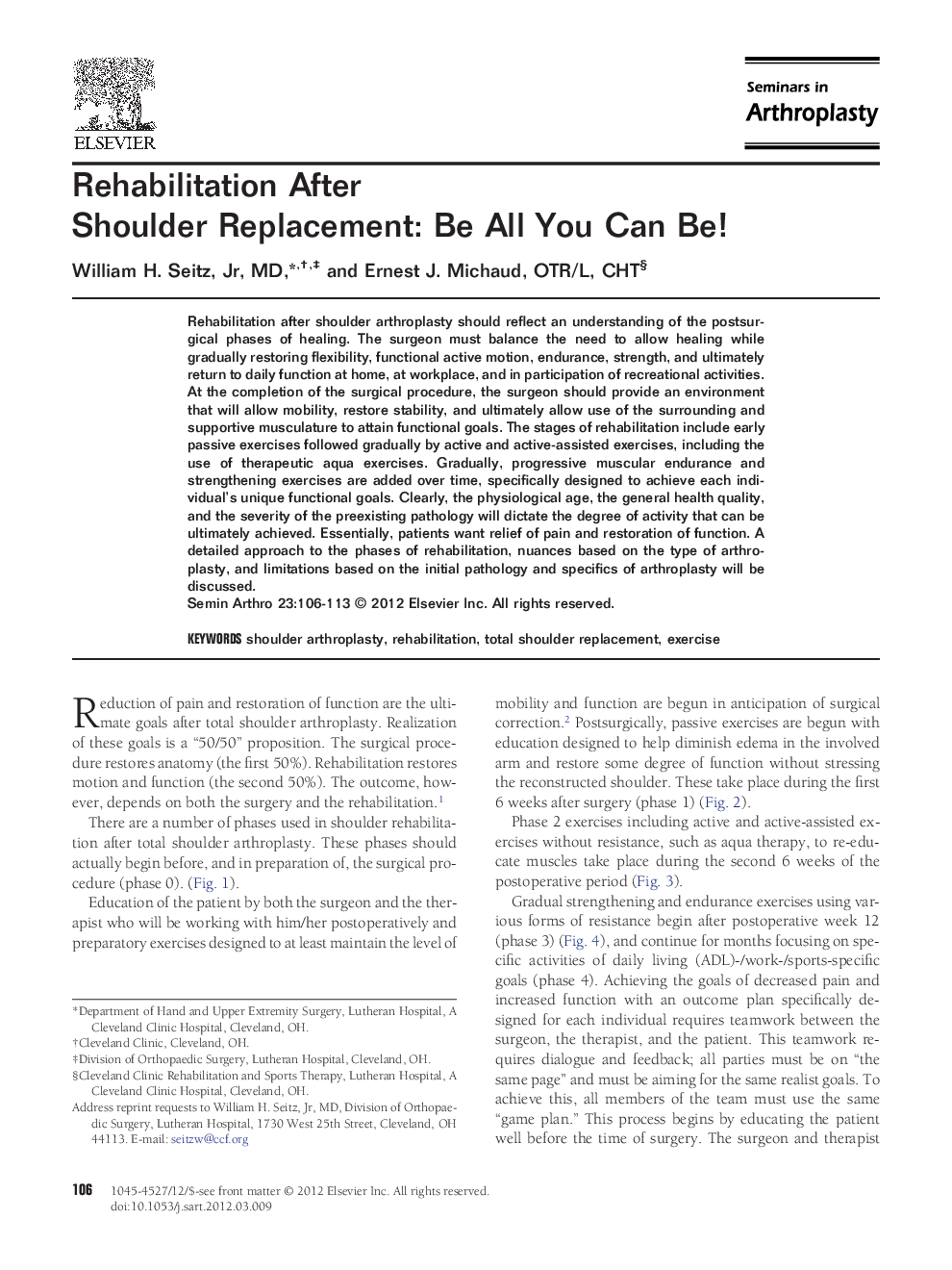| Article ID | Journal | Published Year | Pages | File Type |
|---|---|---|---|---|
| 4094137 | Seminars in Arthroplasty | 2012 | 8 Pages |
Rehabilitation after shoulder arthroplasty should reflect an understanding of the postsurgical phases of healing. The surgeon must balance the need to allow healing while gradually restoring flexibility, functional active motion, endurance, strength, and ultimately return to daily function at home, at workplace, and in participation of recreational activities. At the completion of the surgical procedure, the surgeon should provide an environment that will allow mobility, restore stability, and ultimately allow use of the surrounding and supportive musculature to attain functional goals. The stages of rehabilitation include early passive exercises followed gradually by active and active-assisted exercises, including the use of therapeutic aqua exercises. Gradually, progressive muscular endurance and strengthening exercises are added over time, specifically designed to achieve each individual's unique functional goals. Clearly, the physiological age, the general health quality, and the severity of the preexisting pathology will dictate the degree of activity that can be ultimately achieved. Essentially, patients want relief of pain and restoration of function. A detailed approach to the phases of rehabilitation, nuances based on the type of arthroplasty, and limitations based on the initial pathology and specifics of arthroplasty will be discussed.
